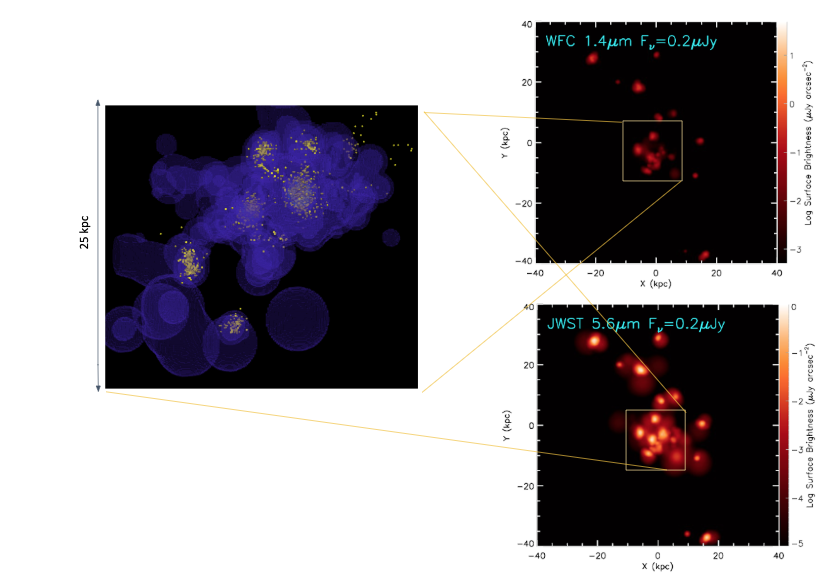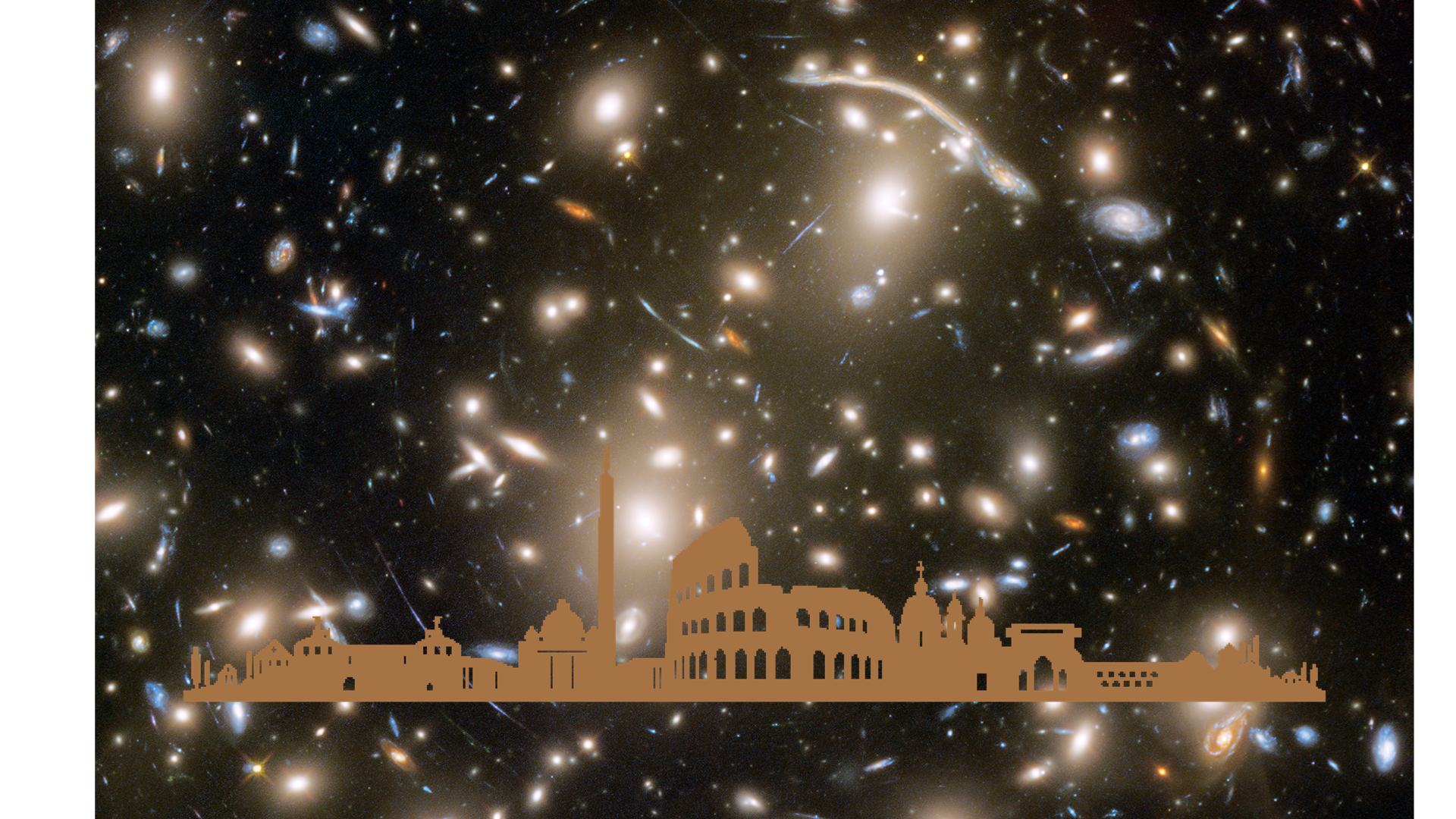
The left panel shows the distribution of stars (yellow) and dust (violet, darker/brighter regions trace lower/higher dust mass density) of the central galaxy (25 kpc size region) of one of the largest halos (with a total dark matter mass of 8.7 1011Msun at z = 6.7) predicted by a 50 h-1 Mpc-size simulation run with dustyGADGET. The two right panels show the results of RT calculations zooming-out on a larger region (80 kpc) around the same galaxy (marked by the yellow boxes). The maps represent the emission at rest-frame wavelengths 1800 Å in the HST F140W filter (top) and 7200 Å in the JWST MIRI filter at 5.6 ?m (bottom). Compared to HST, JWST is able to detect stars from the most dust-embedded regions of the galaxy.
For a long time, most of the information we had on the physical properties of z > 6 galaxies, such as their on-going star formation rate, their stellar mass and stellar ages, have been inferred from their rest-frame ultraviolet and near-IR emission. ALMA has opened the possibility to observe the emission from their interstellar (molecular and atomic) gas and dust at rest-frame far-IR wavelengths. The picture that is emerging from targeted observations of normal star forming galaxies, that represent the bulk of the populations at those redshifts, is controversial, with some galaxies showing extremely blue colours and no dust emission and other galaxies showing significant amount interstellar dust and already mature stellar populations. Blank surveys on large fields are providing evidence for optically and UV- dark galaxies which are visible only to FIR emission out to z > 5 – 6. While these systems appear to be among the most massive ones when compared to control samples, their very existence suggests that we may be still missing a fraction of the galaxy population, questioning the completeness of our understanding of star formation and galaxy evolution at z > 6. Even when we observe the rest-frame UV/optical emission and far-IR emission from the same galaxy, they are often spatially off-set, indicating complex morphologies that may significantly bias our interpretation of their physical properties. As an example, a pronounced Balmer break, usually indicative of a mature stellar population, may be also caused by a more severe dust attenuation of the light from young stellar populations compared to older ones.
The origin and properties of interstellar dust at z > 6 are also largely unknown. At these early cosmic epochs, we expect supernovae (SN) to provide the dominant contribution, although their efficiency dramatically depends on the fraction of dust that survives the passage of the SN reverse shock. In addition, in galaxies with a few hundred Myr old stellar populations, Asymptotic Giant Branch (AGB) stars start to contribute to dust enrichment. The composition and size distribution of the interstellar grains depends on the relative contribution of these two classes of stellar sources and their metallicity-dependent dust yields. Once injected in the interstellar medium (ISM), the grains will be subject to a number of physical processes (sputtering in SN shocks, sublimation in the hot phase, grain growth in the warm phase) that can largely modify their original properties, affecting the overall dust emissivity and extinction curve. Despite this complexity, in the past 10 years semi-analytical, semi-numerical and full numerical models have attempted to pursue an ab-initio description of chemical evolution with dust in a cosmological context. This requires the ability to model metallicity and mass-dependent stellar dust yields and the subsequent processing of the grains in different phases of the ISM. In addition, to compare with galaxy observations, a full radiative transport model needs to be run on the synthetic galaxies, which – in turn – requires a large enough resolution to describe the relative distribution of stars and dust.
To accomplish this goal, we have recently developed a new code, named dustyGADGET, that implements a consistent evolution of grains in different phases of the ISM and follows the spreading of dust and atomic metals by galactic winds throughout the scales of circum- and intergalactic medium (CGM/IGM). You can read more about dustyGADGET in Graziani et al. (2020). We are currently using dustyGADGET simulations to support and guide the interpretation of the ALMA large program REBELS.
